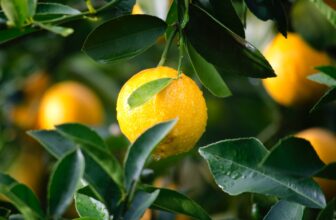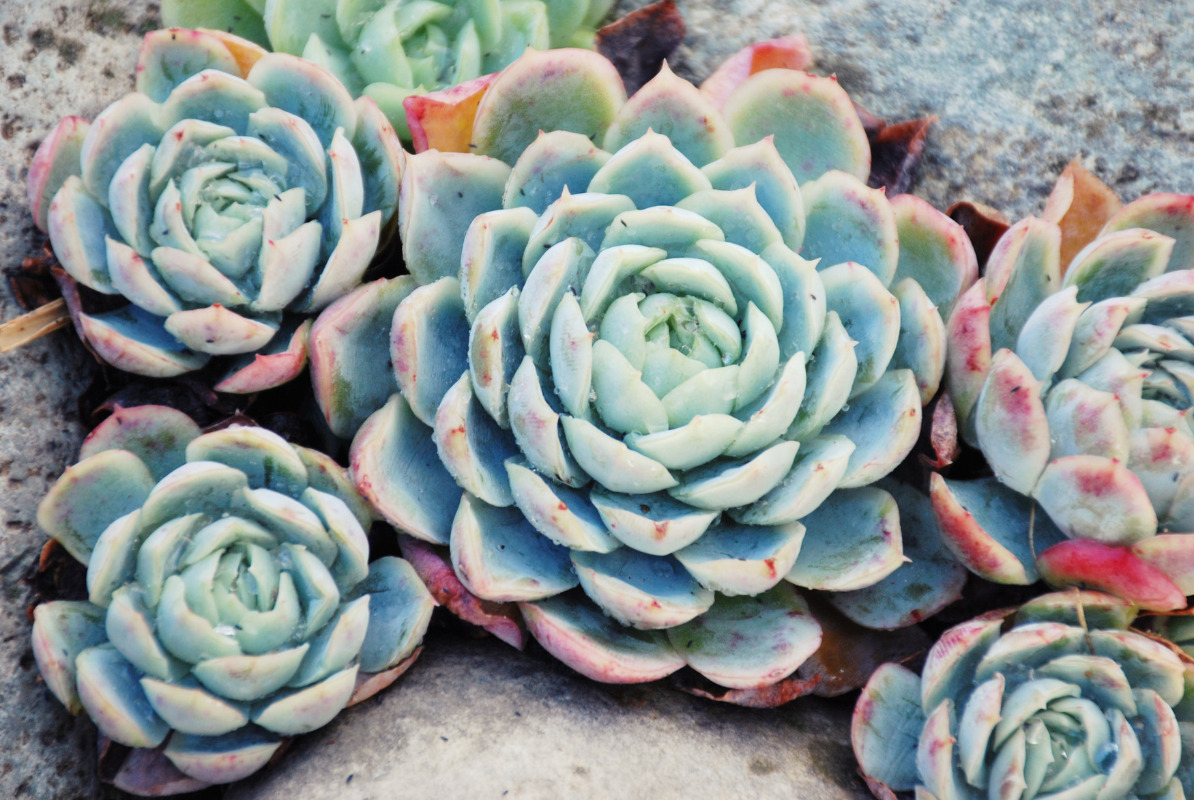
Table of Contents
Hens-and-chicks is very popular among gardeners looking for both drought-tolerant and low-maintenance qualities. They grow in line with the ground spreading like a mat and therefore are called ground-hugging succulents.
These are grown for their ornamental appearance. They are very easy to maintain and care for like other succulents. An interesting fact about Hens-and-chicks succulents is that they have a color-changing nature depending on the season. They can be grown both indoors and outdoors. They are also grown on pavers to give beauty to patios and walkways.
Here are some tips and tricks to help grow your Hens-and-chicks.
About Hens-and-Chicks
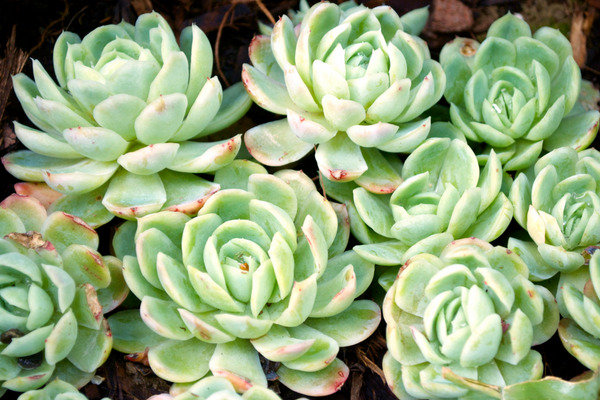
The scientific botanical name for Hen-and-Chicks is Sempervivum, which is a group of succulents. This plant belongs to the flowering plant, the Crassulaceae. It is native to Southern Europe and Northern Africa.
Sempervivum tectorum is derived from Latin. Sempervivum means always living or an evergreen plant and tectorum in Latin mean on roofs, which when put together gives a meaning of always living on roofs. They are also called houseleeks. The Hens–and–Chicks got the Latin name as in the past in Europe people used to plant them on thatch roofs to protect their houses to reduce the risk of catching fire from lightning.
These plants are small, grow closer to the ground, and have their leaves gathered around closer to each other in a rosette. The hen is said to be the mother plant and the chicks are the propagated bunch of offspring.
These develop small, tiny buds on the mother plant at first and then sprout their roots, taking some space closer to the mother plant. They stay attached to the mother by roots called runners that spread in all directions and stay connected till the mother dies or the new offset is detached from the mother plant and repotted.
Hens-and-chicks are best suitable for growing in pots or in gardens. They produce flowers only once in their lifetime. After flowering, they will die leaving their baby plants which will be ready to take the mother plant’s role to carry on the botanical process. These flowers produce seeds for the further growth of their species.
Varieties of Hens-and-Chicks
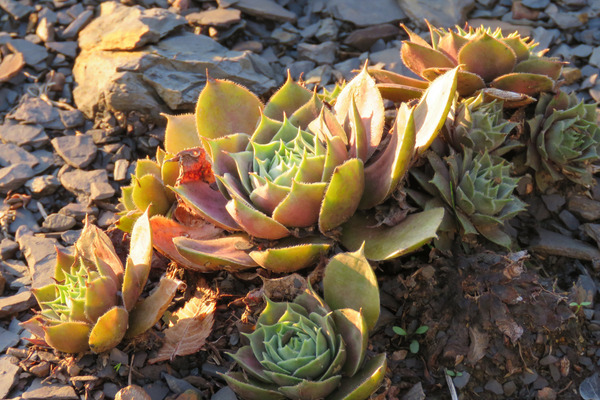
There are wide ranges of hybrids and species of Sempervivum. They all have the same rosette-shaped characteristic that almost requires the same growth habitats and conditions. They roughly grow to a height of 6 to 12 inches and a width of 6 to 18 inches.
Each variety produces different colored flowers and grows its offsets which together with the hen in a cluster appear to have their unique different shapes and attractiveness.
The common color of Sempervivum is found in shades of green but it also comes in other colors, and some can also change color depending on the changes in the surrounding conditions. For instance, when considering the commonly found Sempervivum that is found with shades of green, you could see the tips of its leaves turn red on receiving the right conditions, some plants even entirely change themselves to red.
What is Hens-and-Chicks Used For?
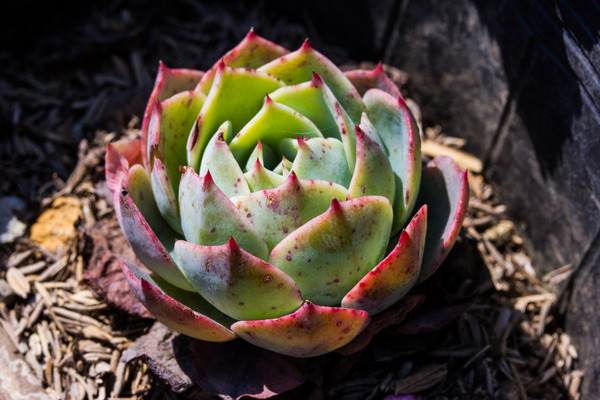
For many years the leaves of Hen-and-Chicks have contributed to the medical field as herbal remedies. These leaves have also been used in place of aloe vera to cure wounds caused by insect bites, sores, and burns that are not very severe.
The extract got from these leaves exhibits natural antioxidant and antimicrobial properties. The antioxidant properties form after soil droughts that last for a very long term. They are also completely edible and can be used in salads and other dishes. It has a bit of a sour taste like the taste of an unripe apple.
How To Plant and Maintain Hens-and-Chicks
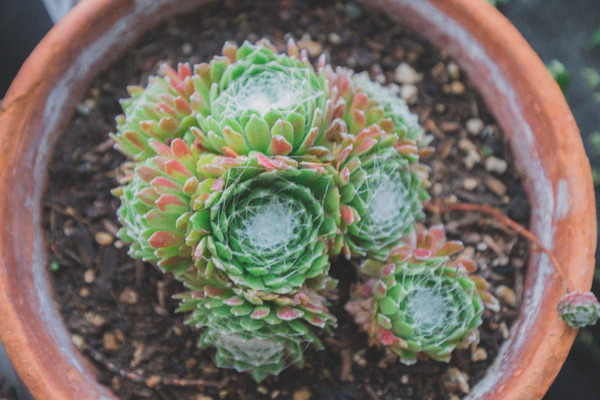
The Sempervivums start to have their offspring, the chicks after 1 season. They have a lifespan of 3 years, 2 of which are productive years. By the time they complete about 3 years they would have produced many baby plants or chicks. The chicks then individually turn to hens to take the role of their mother plant when the hen dies.
The hen plant dies after growing a tall stalk from its center that blooms. Some think cutting the center stalk can stop the plant from dying but the bitter truth is nothing can save the plant from dying.
Since they die after flowering only once they are known as monocarpic plants. Even though they have a short lifespan they produce a huge number of offspring which allows their species to thrive and exist.
Blooms produced have seeds that can also be grown into new plants. After its completion of about 3 years, the blooms produced are a sign to show that the plant is going to die, and the chicks are fully ready for individual growth and need more space to produce their own sets of chicks. It is better to separate the chicks from the mother plant every two years to avoid overcrowding.
They develop color changes all through the season due to maturity and changes in levels of temperature, sunlight, and other factors. If you want to experience the maximum beauty of this plant, make sure it is given adequate space to produce its rosettes.
· Suitable Location and Climate
The preferred growing zone is 4 to 8. It is challenging for them to survive during winter, so they must be moved to a greenhouse, indoors, to avoid very cold weather. Sunlight helps this succulent to bring out its bright colors.
Keeping them in constant shade will make them lose their colorful beauty as the plant fades to a plain green. Therefore, keeping them in sunlight is essential but if the weather is very hot, afternoon shade can help the colors to last longer.
· Soil
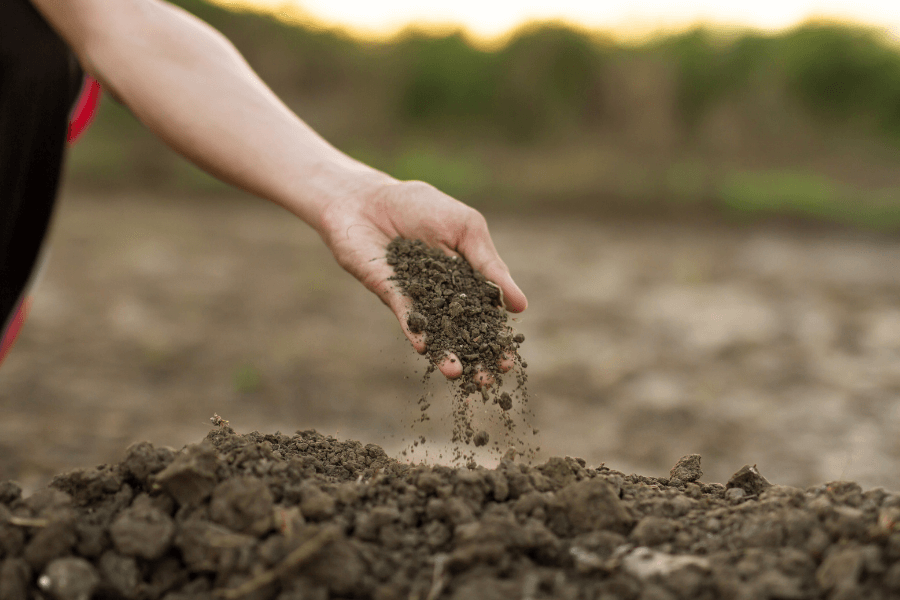
Sempervivum grows well in soil that does not allow the water to stagnate but instead allows the water to drain easily like rocky soil or sandy soil. If you are planning to grow them on the ground you can help with drainage by adding compost, potting soil, gravel, or vermiculite. You could even use commercial succulent soil. It prefers a pH of around 6 which is slightly acidic.
The roots are very fine which makes them easily penetrate through the cracks and therefore can be grown in rock gardens or rock walls that have cracks in them. It is important to keep the water running so that the roots do not soak and start rotting.
There are pots available that help with drainage at the base, which also helps with moisture circulation. When grown in pots the young plantlets trail over the sides beautifully.
· Sunlight
It loves the sunlight making sunny windowsills a perfect place for it to have good health. Unlike other conditions, sunlight exposure plays a major role in helping the plant bring out its colors and make it last longer. This not only stops color change but also makes the plant become thin and eventually die.
· Watering
Though this plant is drought tolerant when fully established it is advised to give the plant the right amount of water as too little or too much can kill the plant. Watering should be monitored more often during spring and summer, making sure the water can drain easily.
During the winter season, you can reduce the amount of water given. These plants are known to be carefree plants so the main problem they can face is by getting too much water so be aware of how much water is given.
· Fertilizing
They can grow in poor to moderately fertilized soil. Remember potted plants need more fertilizers compared to the plants grown on the ground. For better growth, you can fertilize the soil of your houseleeks with controlled-release fertilizers at the start of the season, or else you could also feed them with a weak liquid solution.
If your houseleeks are young, then it is advised to use fertilizers that contain less nitrogen, and if they are mature enough a balanced 20-20-20 fertilizer can be used at a ¼ strength.
· Temperature and Humidity
The perfect temperature for hens-and-chicks is between 65° and 75° F. A rise or fall in temperature can cease plant growth as the plants become semi-dormant where plants stop their growth and preserve energy till the conditions get better.
The plant best grows in an average indoor relative humidity of about 30 to 50 percent. Extra humidity can increase the chances of being affected by pests and diseases.
· Propagation

Propagation in Hens–and–chicks is not a difficult task as the mother plant known to be the hen produces offsets in large numbers which gather around the mother in clusters known to be the chicks. These chicks can be easily separated from the mother plant and repotted or they can also be left as it is to form a clumping mat.
Repotting is mostly done during the warm season in which the plants grow. When removing the chick from its mother make sure the soil is dry and carefully remove the chick. Then gently remove the old soil and watch out for rotted or dead roots and carefully remove them also.
For better results, you could apply a fungicide if there are cuts to prevent the growth of fungi and their spores, and in addition, it can also prevent rusts, mildews, and blights.
The chick which was removed from the mother now can be placed by spreading the roots out in its new pot and completing it by filling it with potting soil. It is advised to leave the chick dry for a couple of days or a week, then you can start watering it lightly for another couple of days before starting to give the usual amount of water. This way of watering is done to cut off the risk of root rot.
Another way to propagate Hens-and-chicks is by the seeds they produce before they die. The seeds should be sown in a cactus mix. Misting the cactus mix is continued until it becomes evenly damp. This moist condition is developed by spraying water particles to facilitate seed germination. Until germination seeds are placed in a warm room.
When you see the seeds turned into seedlings sprinkle some gravel to give it a hand in conserving the moisture. The seedlings then can be moved to a bright sunny window and need to be misted very often for a few days. When you find the seedlings grown to an inch in diameter, it is time for their transplant. Then let them grow in their new pots.
· Pests and Diseases
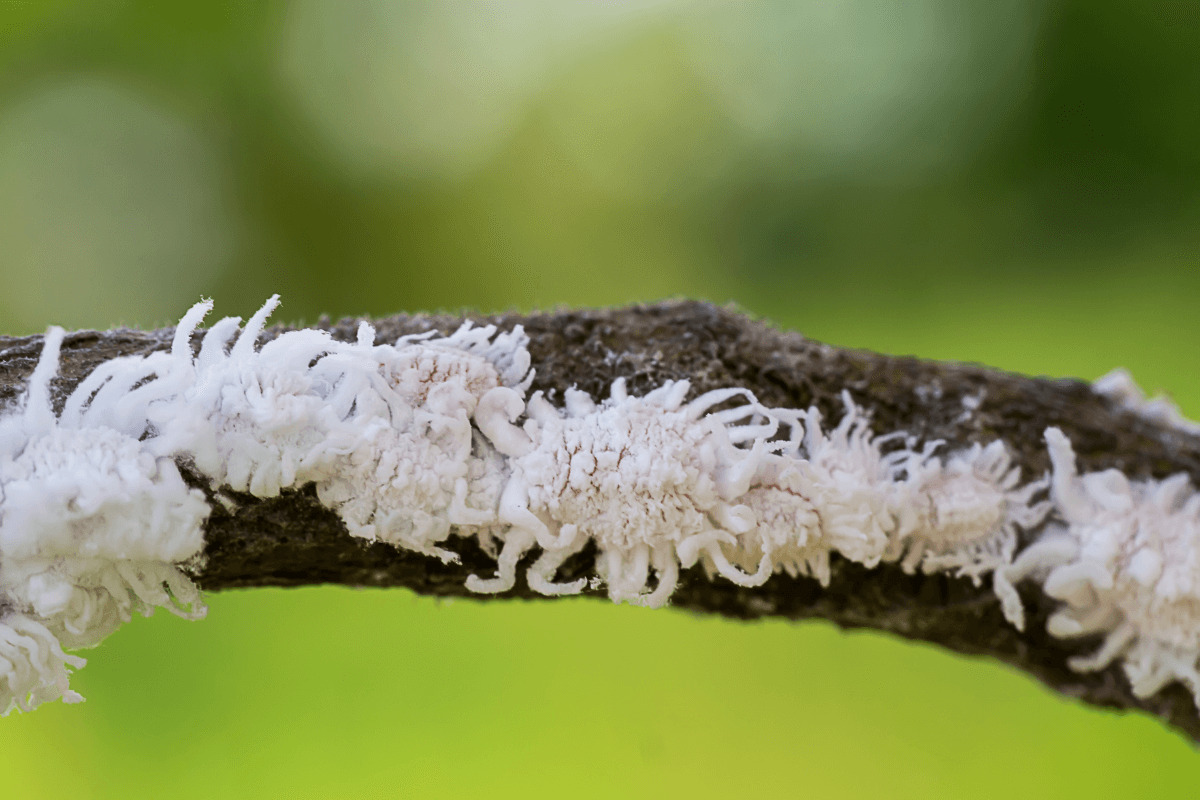
Like other succulents, they are also prone to develop diseases and can be affected by pests. Pests are most likely to affect plants when they are grown indoors, in greenhouses, or in places where the plant has overly moist surroundings. The common pests that attack them are mealy bugs and aphids.
As soon as you see these tiny creatures on your plant start to try removing them with the use of cotton swabs or cotton balls well-soaked in rubbing alcohol. You can also try using neem oil or insecticidal soap to treat your plants to get rid of pests.
Moist conditions or poor drainage contribute to the increase in the chances of getting affected by fungal diseases. The most common fungal diseases developed are leaf spots and root rot. To avoid or get rid of these diseases, moving the pot to dry surroundings under bright sunlight is advisable.
You could also use a fungicide when identified at the start. But most fungal diseases can kill the plant completely and some fungal diseases spread to other plants to avoid this we must completely remove and destroy the plant to rescue the whole garden.
The Take-Away
Hens-and-chicks make gardening very easy. It is a low-maintenance plant making it the best choice for those that want their garden to look beautiful, but only have a little time to spend on it. It can grow in almost any condition with little care but brings character and color to your garden.






